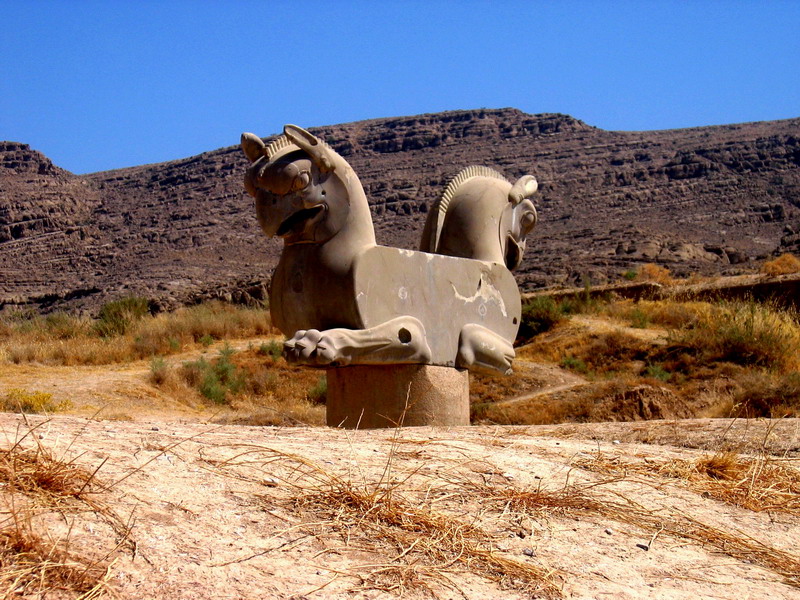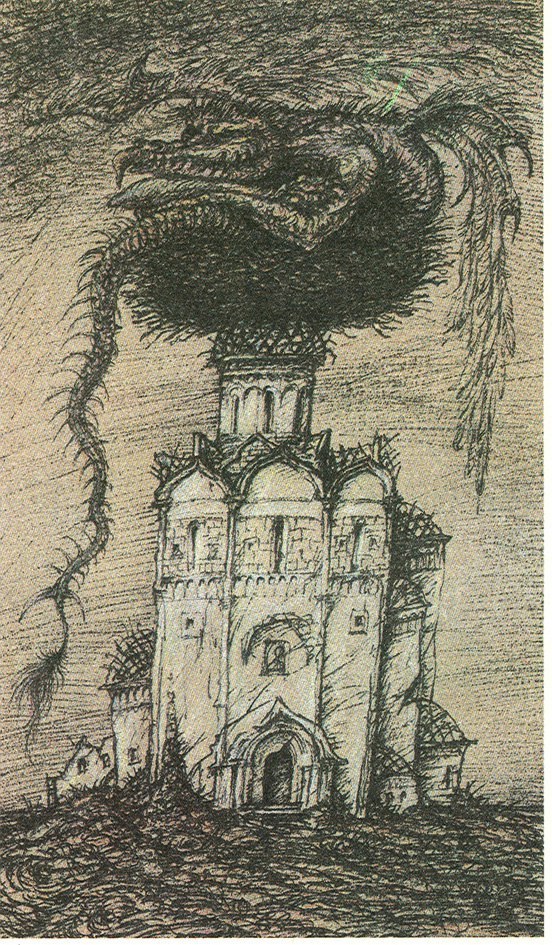|
Zahhak
Zahhāk or Zahāk () ( fa, ضحّاک), also known as Zahhak the Snake Shoulder ( fa, ضحاک ماردوش, Zahhāk-e Mārdoush), is an evil figure in Persian mythology, evident in ancient Persian folklore as Azhi Dahāka ( fa, اژی دهاک), the name by which he also appears in the texts of the '' Avesta''. In Middle Persian he is called Dahāg ( fa, دهاگ) or Bēvar Asp ( fa, بیور اسپ) the latter meaning "he who has 10,000 horses". In Zoroastrianism, Zahhak (going under the name Aži Dahāka) is considered the son of Ahriman, the foe of Ahura Mazda. In the '' Shāhnāmah'' of Ferdowsi, Zahhāk is the son of a ruler named Merdās. Etymology and derived words ''Aži'' (nominative ''ažiš'') is the Avestan word for "serpent" or "dragon". It is cognate to the Vedic Sanskrit word ''ahi'', "snake", and without a sinister implication. The original meaning of ''dahāka'' is uncertain. Among the meanings suggested are "stinging" (source uncertain), "burning" (cf. Sans ... [...More Info...] [...Related Items...] OR: [Wikipedia] [Google] [Baidu] |
Shahnameh
The ''Shahnameh'' or ''Shahnama'' ( fa, شاهنامه, Šāhnāme, lit=The Book of Kings, ) is a long epic poem written by the Persian poet Ferdowsi between c. 977 and 1010 CE and is the national epic of Greater Iran. Consisting of some 50,000 "distichs" or couplets (two-line verses), the ''Shahnameh'' is one of the world's longest epic poems. It tells mainly the mythical and to some extent the historical past of the Persian Empire from the creation of the world until the Muslim conquest in the seventh century. Iran, Azerbaijan, Afghanistan, Tajikistan and the greater region influenced by Persian culture such as Armenia, Dagestan, Georgia, Turkey, Turkmenistan and Uzbekistan celebrate this national epic. The work is of central importance in Persian culture and Persian language, regarded as a literary masterpiece, and definitive of the ethno-national cultural identity of Iran. It is also important to the contemporary adherents of Zoroastrianism, in that it traces th ... [...More Info...] [...Related Items...] OR: [Wikipedia] [Google] [Baidu] |
Shāhnāme
The ''Shahnameh'' or ''Shahnama'' ( fa, شاهنامه, Šāhnāme, lit=The Book of Kings, ) is a long epic poem written by the Persian poet Ferdowsi between c. 977 and 1010 CE and is the national epic of Greater Iran. Consisting of some 50,000 "distichs" or couplets (two-line verses), the ''Shahnameh'' is one of the world's longest epic poems. It tells mainly the mythical and to some extent the historical past of the Persian Empire from the creation of the world until the Muslim conquest in the seventh century. Iran, Azerbaijan, Afghanistan, Tajikistan and the greater region influenced by Persian culture such as Armenia, Dagestan, Georgia, Turkey, Turkmenistan and Uzbekistan celebrate this national epic. The work is of central importance in Persian culture and Persian language, regarded as a literary masterpiece, and definitive of the ethno-national cultural identity of Iran. It is also important to the contemporary adherents of Zoroastrianism, in that it traces the histo ... [...More Info...] [...Related Items...] OR: [Wikipedia] [Google] [Baidu] |
Persian Mythology
Persian mythology or Iranian mythology ( Persian:اساطیرشناسی ایرانی) is the body of the myths originally told by ancient Persians and other Iranian peoples, and a genre of Ancient Persian folklore. These stories concern the origin and nature of the world, the lives and activities of deities, heroes, and mythological creatures, and the origins and significance of the ancient Persians' own cult and ritual practices. Modern scholars study the myths to shed light on the religious and political institutions of not only modern-day Iran but the Greater Iran, which includes regions of West Asia, Central Asia, South Asia and Transcaucasia where Iranian culture has had significant influence. Historically, these were regions long ruled by dynasties of various Iranian empires, that incorporated considerable aspects of Persian culture through extensive contact with them, or where sufficient Iranian peoples settled to still maintain communities who patronize their respective ... [...More Info...] [...Related Items...] OR: [Wikipedia] [Google] [Baidu] |
Dasa
''Dasa'' ( sa, दास, Dāsa) is a Sanskrit word found in ancient Indian texts such as the ''Rigveda'' and ''Arthasastra''. It usually means "enemy" or "servant" but ''dasa'', or ''das'', also means a " servant of God", "devotee," " votary" or "one who has surrendered to God". Dasa may be a suffix of a given name to indicate a "servant" of a revered person or a particular deity. ''Dasa'', in some contexts, is also related to ''dasyu'' and ''asura'', which have been translated by some scholars as "demon", "harmful supernatural forces", "slave", "servant" or "barbarian", depending on the context in which the word is used.Wash Edward Hale (1999), Ásura- in Early Vedic Religion, Motilal Barnarsidass, , pages 159-169 Etymology ''Dāsa'' first appears in Vedic texts from the second millennium BCE. There is no consensus on its origins. Karl Heinrich Tzschucke in 1806, in his translations of the Roman geographer Pomponius Mela, noted etymological and phonological parallels between ... [...More Info...] [...Related Items...] OR: [Wikipedia] [Google] [Baidu] |
Manichaean
Manichaeism (; in New Persian ; ) is a former major religionR. van den Broek, Wouter J. Hanegraaff ''Gnosis and Hermeticism from Antiquity to Modern Times''SUNY Press, 1998 p. 37 founded in the 3rd century AD by the Parthian prophet Mani (AD 216–274), in the Sasanian Empire. Manichaeism teaches an elaborate dualistic cosmology describing the struggle between a good, spiritual world of light, and an evil, material world of darkness. Through an ongoing process that takes place in human history, light is gradually removed from the world of matter and returned to the world of light, whence it came. Its beliefs are based on local Mesopotamian religious movements and Gnosticism. It reveres Mani as the final prophet after Zoroaster, Gautama Buddha, and Jesus. Manichaeism was quickly successful and spread far through the Aramaic-speaking regions. It thrived between the third and seventh centuries, and at its height was one of the most widespread religions in the world. Mani ... [...More Info...] [...Related Items...] OR: [Wikipedia] [Google] [Baidu] |
Azhdahak (mythology)
Azhdahak (also spelled Ashdahak) is the Armenian name of the Avestan demon Azhi Dahaka. In Iranian mythology, he is imprisoned in Mount Damavand, but will at the end of time break out, to be ultimately defeated by Fereydun. In his '' History of Armenia'', the 5th-century Armenian writer Movses Khorenatsi identified Azhdahak with the Median king Astyages (). Astyages' name (which is the Greek transliteration of the Old Iranian ''*Aršti-vaiga'') was similar to that of Azhdahak, and the name ''Māda'' ("Mede") was pronounced in Armenian as ''Mār'', which means snake in Iranian languages. See also *List of dragons in mythology and folklore * Aži Dahāka *Vishap The Vishap (Վիշապ) is a dragon in Armenian mythology closely associated with water, similar to the Leviathan. It is usually depicted as a winged snake or with a combination of elements from different animals. Mount Ararat was the main home o ... References Sources * * Armenian legendary creatures Dragons M ... [...More Info...] [...Related Items...] OR: [Wikipedia] [Google] [Baidu] |
Ahriman
Angra Mainyu (; Avestan: 𐬀𐬢𐬭𐬀⸱𐬨𐬀𐬌𐬥𐬌𐬌𐬎 ''Aŋra Mainiiu'') is the Avestan-language name of Zoroastrianism's hypostasis of the "destructive/evil spirit" and the main adversary in Zoroastrianism either of the Spenta Mainyu, the "holy/creative spirits/mentality", or directly of Ahura Mazda, the highest deity of Zoroastrianism. The Middle Persian equivalent is Ahriman 𐭠𐭧𐭫𐭬𐭭𐭩 (anglicised pronunciation: ). The name can appear in English-language works as Ahrimanes. In the Avesta In Zoroaster's revelation Avestan ''angra mainyu'' "seems to have been an original conception of Zoroaster's." In the Gathas, which are the oldest texts of Zoroastrianism and are attributed to Zoroaster, ''angra mainyu'' is not yet a proper name.Proper names are altogether rare in the Gathas. In these texts, even Ahura Mazda and Amesha Spenta are not yet proper names. In the one instance in these hymns where the two words appear together, the concept sp ... [...More Info...] [...Related Items...] OR: [Wikipedia] [Google] [Baidu] |
Middle Persian
Middle Persian or Pahlavi, also known by its endonym Pārsīk or Pārsīg () in its later form, is a Western Middle Iranian language which became the literary language of the Sasanian Empire. For some time after the Sasanian collapse, Middle Persian continued to function as a prestige language. It descended from Old Persian, the language of the Achaemenid Empire and is the linguistic ancestor of Modern Persian, an official language of Iran, Afghanistan ( Dari) and Tajikistan ( Tajik). Name "Middle Iranian" is the name given to the middle stage of development of the numerous Iranian languages and dialects. The middle stage of the Iranian languages begins around 450 BCE and ends around 650 CE. One of those Middle Iranian languages is Middle Persian, i.e. the middle stage of the language of the Persians, an Iranian people of Persia proper, which lies in the south-western highlands on the border with Babylonia. The Persians called their language ''Parsik'', meaning "Persian" ... [...More Info...] [...Related Items...] OR: [Wikipedia] [Google] [Baidu] |
Slavic Dragon
A Slavic dragon is any dragon in Slavic mythology, including the Russian '' zmei'' (or ''zmey''; ), Ukrainian ''zmiy'' (), and its counterparts in other Slavic cultures: the Bulgarian ''zmey'' (), the Slovak ''drak'' and ''šarkan'', Czech ''drak'', Polish , the Serbo-Croatian ''zmaj'' (), the Macedonian ''zmej'' (змеј) and the Slovene ''zmaj''. The Romanian ''zmeu'' is also a Slavic dragon, but a non-cognate etymology has been proposed. A ''zmei'' may be beast-like or human-like, sometimes wooing women, but often plays the role of chief antagonist in Russian literature. In the Balkans, the ''zmei'' type is overall regarded as benevolent, as opposed to malevolent dragons known variously as '', '' ala'' or ''hala'', or ''aždaja''. The Polish ''smok'' (e.g. Wawel Dragon of Kraków) or the Ukrainian or Belarusian ''smok'' (смок), ''tsmok'' (цмок), can also be included. In some Slavic traditions ''smok'' is an ordinary snake which may turn into a dragon with ... [...More Info...] [...Related Items...] OR: [Wikipedia] [Google] [Baidu] |
Tajik Language
Tajik (Tajik: , , ), also called Tajiki Persian (Tajik: , , ) or Tajiki, is the variety of Persian spoken in Tajikistan and Uzbekistan by Tajiks. It is closely related to neighbouring Dari with which it forms a continuum of mutually intelligible varieties of the Persian language. Several scholars consider Tajik as a dialectal variety of Persian rather than a language on its own. The popularity of this conception of Tajik as a variety of Persian was such that, during the period in which Tajik intellectuals were trying to establish Tajik as a language separate from Persian, prominent intellectual Sadriddin Ayni counterargued that Tajik was not a "bastardised dialect" of Persian.Shinji ldoTajik Published by UN COM GmbH 2005 (LINCOM EUROPA) The issue of whether Tajik and Persian are to be considered two dialects of a single language or two discrete languages has political sides to it. By way of Early New Persian, Tajik, like Iranian Persian and Dari Persian, is a continuation o ... [...More Info...] [...Related Items...] OR: [Wikipedia] [Google] [Baidu] |
Azhdaha
Azhdaha, Azhdahak, Ezhdeha ( fa, اژدها) or Azhdar (اژدر) is a mythical creature in Iranian mythology, roughly equivalent to the dragon. They are gigantic snake-like creatures living in the air, in the sea, or on the earth. ''Sad dar-e nathr'' and ''sad dar-e Bondahesh'', '' Shahnameh'' and ''Garshaspnameh'' are among the principal texts that contain information about the creature. In Persian literature, Azhdahas are depicted as a giant snake or lizard with wings. According to tradition, they have a huge body, a fierce face, their mouths are wide with many teeth, and their eyes are bright. Azhdahās are actually normal snakes, according to ''Ajāyeb ul-Makhlooghāt'', a book by Mohammad b. Mahmoud b. Ahmad-e Tusi (wrote in 1160 AD), "when a snake lives 100 years and its length becomes 30 Gazes (a traditional measurement unit approximate to a meter), it is called an azhdahā". He also wrote that "because of their harassment to other creatures, God eventually will throw the ... [...More Info...] [...Related Items...] OR: [Wikipedia] [Google] [Baidu] |








